It's just comics- part 4
recap. in part 1 I lamented that for years what we saw of 1950s comics was largely limited to HORROR and/or the EC Comics company and said I'd rather read a ROMANCE comic. In part 2 I cast a brief glance at EC's CRIME comics and then in part 3 I looked at the romance comics Alex Toth drew for Standard.
 Somebody said to me not all that long ago, well probably before the Masters of American Comics exhibition, that he just didn't get Jack Kirby. I then realized that he only knew about Kirby from the comics he had read in the late 1970s, which nobody would ever claim were the artist's best years. Naturally I told him to read the work of the 1960s. But then I had lived through that decade, and also understood Kirby 's work from the early 1940s because Marvel and DC both got into reprinting most of it, Captain America on the one hand and Sandman, Newsboy Legion and the Guardian on the other. But hey, I know hardly anything about his doings in the 1950s.
Somebody said to me not all that long ago, well probably before the Masters of American Comics exhibition, that he just didn't get Jack Kirby. I then realized that he only knew about Kirby from the comics he had read in the late 1970s, which nobody would ever claim were the artist's best years. Naturally I told him to read the work of the 1960s. But then I had lived through that decade, and also understood Kirby 's work from the early 1940s because Marvel and DC both got into reprinting most of it, Captain America on the one hand and Sandman, Newsboy Legion and the Guardian on the other. But hey, I know hardly anything about his doings in the 1950s.
The period that was the most lucrative for Kirby has remained largely uncharted for me. I could have told you the titles of the books he worked on in the late 1940s/ early 50s: Bullseye, Foxhole, Justice Traps the Guilty, Headline, Black Magic, and I could have repeated the information that I had read that Simon and Kirby introduced the ROMANCE genre to comics with their Young Romance. In itself that was no big deal; if they hadn't done it somebody else would have. All the popular genres of the pulp magazines acquired their comic book counterparts in the years following World War 2, after the superheroes went out of fashion. However, not only did they get in early enough to make a killing, they also made a profit sharing deal with Prize Comics (an imprint of Crestwood), another of those publishers who are now long defunct. Young Romance #4- March 1948. art by Kirby. See all the covers at the Grand Comics Database. After #12 they mostly used photos of young actors instead of artwork.
Young Romance #4- March 1948. art by Kirby. See all the covers at the Grand Comics Database. After #12 they mostly used photos of young actors instead of artwork.
Harry Mendryk has written an enormous account of the Simon/Kirby Romance era, a series of 38 continuous blog posts analyzing the material in three-monthly blocks all through the period '47-'60. The Art of Romance is a remarkable document, a vault of specifics, of date and attribution, market analysis and interviews with one of the two key players, Joe Simon (now aged 98). (links to all chapters are at the foot of each post). Mendryk crunches the numbers and shows that the artist who would create (or co-create with Stan Lee) the Incredible Hulk, the X-Men and all the characters that are now shoring up Hollywood, spent most of his time in the the 1950s drawing ROMANCE comics.
We think of Romance comics as having a very distinctive style, favouring elegance and an attention to gesture and stylish clothing, with the stories always written in first person. Later it would have its cliches, with the tearful girl sobbing on the cover and the splash page. You've seen the Lichtenstein paintings, but remember the painter was working quite late, in 1962-63, by which time the ROMANCE genre was in decline. The thing about the ROMANCE comic in 1947 was that it hadn't found its own style yet. This had to be worked out on the job. The soap opera genre had still to take hold in the field of newspaper strips, but Mary Worth was already making good headway in a sub-Caniff style. Rip Kirby had started in March 1946, introducing the 'photorealist style' to comics that would be picked up by Stan Drake for the soap opera genre in Juliet Jones in 1953. Otherwise, Simon and Kirby were looking at a blank page. They had to start by throwing out all the action techniques, the airborne figures extending beyond the panel borders, the exaggerated foreshortening. At the beginning they still have a residue of that kind of thinking, then they start focussing more on facial expression and pattern.
 Young Romance #16.-December 1949- art by Jack Kirby (This and the images below have been excellently restored by Harry Mendryk and are used here with permission.)
Young Romance #16.-December 1949- art by Jack Kirby (This and the images below have been excellently restored by Harry Mendryk and are used here with permission.)
Most of the artists who would become players in the newspaper strip field in the '50s and '60s started in the comic books, and a few even worked for Simon and Kirby. The pair were contracted to supply several titles for Prize's comic book line, and to this end they set up a studio and employed other artists on either a staff or freelance basis to make up the package. For instance you can find John Prentice, who took over Rip Kirby after Raymond's death in (1956-1999), and Leonard Starr who started his own strip Mary Perkins On Stage (1957-1979), both supplying Simon and Kirby with artwork for complete stories.
 Young Romance #11- May 1949- art by Leonard Starr
Young Romance #11- May 1949- art by Leonard Starr
Mendryk has an extraordinary eye for recognizing the touch of this or that artist in unsigned stories, of which there are both a huge number of stories and also quite a parade of artists in the pages of those books.. He also, more importantly, goes about it with a disciplined logic. Too often this kind of sport is spoiled by rampant opinioneering. He has also reduced the Simon/Kirby house style to a number of quirks and procedures such as 'picket fence shading' which makes perfect sense when you see it explained.
 Young Brides #4- April 1953- art by Mort Meskin
Young Brides #4- April 1953- art by Mort Meskin
Mendryk has cunningly deduced that Mort Meskin worked bodily in the studio for a time. He's an artist of the period deserving of much more attention that he has so far received.
I asked Harry if I could use three of his restored pages, but I'm going to push my luck and steal a fourth. The one below is something of an anomaly, with all those cartoon characters in a marvelous splash panel by Marvin Stein, yet another artist I would like to know much more about.
 Young Love #25- September 1951- art by Marvin Stein.
Young Love #25- September 1951- art by Marvin Stein.
While I have just focussed on Romance here, Harry Mendryk has written on every possible aspect of Simon and Kirby and their studio, so if you have a conundrum to figure out about the period, or you just want to get lost in another time for an hour or two, make his blog at the Kirby Museum your first stop.
The book cover at the very top is a new publication from Fantagraphics coming in Jan 2012. Michael Gagne explains how he has been putting the project together since 2003. The book contains a selection of the best of Jack Kirby's stories for the Romance books, 20 of them, covering all the years 1947- 1959, with a 12 page cover gallery. I can't wait. amazon
still more soppy romance to come.
And hey, it's just comics. They can't be any stupider than the ones you're reading now.
 Somebody said to me not all that long ago, well probably before the Masters of American Comics exhibition, that he just didn't get Jack Kirby. I then realized that he only knew about Kirby from the comics he had read in the late 1970s, which nobody would ever claim were the artist's best years. Naturally I told him to read the work of the 1960s. But then I had lived through that decade, and also understood Kirby 's work from the early 1940s because Marvel and DC both got into reprinting most of it, Captain America on the one hand and Sandman, Newsboy Legion and the Guardian on the other. But hey, I know hardly anything about his doings in the 1950s.
Somebody said to me not all that long ago, well probably before the Masters of American Comics exhibition, that he just didn't get Jack Kirby. I then realized that he only knew about Kirby from the comics he had read in the late 1970s, which nobody would ever claim were the artist's best years. Naturally I told him to read the work of the 1960s. But then I had lived through that decade, and also understood Kirby 's work from the early 1940s because Marvel and DC both got into reprinting most of it, Captain America on the one hand and Sandman, Newsboy Legion and the Guardian on the other. But hey, I know hardly anything about his doings in the 1950s.The period that was the most lucrative for Kirby has remained largely uncharted for me. I could have told you the titles of the books he worked on in the late 1940s/ early 50s: Bullseye, Foxhole, Justice Traps the Guilty, Headline, Black Magic, and I could have repeated the information that I had read that Simon and Kirby introduced the ROMANCE genre to comics with their Young Romance. In itself that was no big deal; if they hadn't done it somebody else would have. All the popular genres of the pulp magazines acquired their comic book counterparts in the years following World War 2, after the superheroes went out of fashion. However, not only did they get in early enough to make a killing, they also made a profit sharing deal with Prize Comics (an imprint of Crestwood), another of those publishers who are now long defunct.
(Wikipedia quoting Richard Howell) Launched with a September 1947 cover date, the Prize Comics title Young Romance signaled its distinction from traditional superhero and genre comics with a cover banner stating the series was "designed for the more adult readers of comics". Told from a first person perspective, underlining its claim to be recounting "true" stories, the title was an instant success, "becoming Jack and Joe's biggest hit in years" and selling "millions of copies" and a staggering 92% of its print run. Crestwood increased the print run by the third issue to triple the initial numbers, and well as upgrade the title from bimonthly to monthly through issues #13-72 (Sept. 1949 - Aug. 1954).
 Young Romance #4- March 1948. art by Kirby. See all the covers at the Grand Comics Database. After #12 they mostly used photos of young actors instead of artwork.
Young Romance #4- March 1948. art by Kirby. See all the covers at the Grand Comics Database. After #12 they mostly used photos of young actors instead of artwork.Harry Mendryk has written an enormous account of the Simon/Kirby Romance era, a series of 38 continuous blog posts analyzing the material in three-monthly blocks all through the period '47-'60. The Art of Romance is a remarkable document, a vault of specifics, of date and attribution, market analysis and interviews with one of the two key players, Joe Simon (now aged 98). (links to all chapters are at the foot of each post). Mendryk crunches the numbers and shows that the artist who would create (or co-create with Stan Lee) the Incredible Hulk, the X-Men and all the characters that are now shoring up Hollywood, spent most of his time in the the 1950s drawing ROMANCE comics.
"To put some perspective on it for the period spanned by this serial post (cover dates September 1947 to December 1959) Jack Kirby drew a total of 3855 pages of art. At 1936 pages, romance was by far the greatest part of that work."The comics industry was slow to get on the band wagon, but by the middle of 1949 things were building to a glut:
"The peak occurred at January 1950 where there were 126 romance titles out! This is followed by an almost equally dramatic decline in love titles until a low of 45 titles is reached in November 1950.(Mendryk refers us to Matt Thorn's list of the titles of All the Romance comics ever published, in which the number of publishers involved comes to 38, leaving out two or three that were post-1950s reprints and/or attempts to revive the genre.)
We think of Romance comics as having a very distinctive style, favouring elegance and an attention to gesture and stylish clothing, with the stories always written in first person. Later it would have its cliches, with the tearful girl sobbing on the cover and the splash page. You've seen the Lichtenstein paintings, but remember the painter was working quite late, in 1962-63, by which time the ROMANCE genre was in decline. The thing about the ROMANCE comic in 1947 was that it hadn't found its own style yet. This had to be worked out on the job. The soap opera genre had still to take hold in the field of newspaper strips, but Mary Worth was already making good headway in a sub-Caniff style. Rip Kirby had started in March 1946, introducing the 'photorealist style' to comics that would be picked up by Stan Drake for the soap opera genre in Juliet Jones in 1953. Otherwise, Simon and Kirby were looking at a blank page. They had to start by throwing out all the action techniques, the airborne figures extending beyond the panel borders, the exaggerated foreshortening. At the beginning they still have a residue of that kind of thinking, then they start focussing more on facial expression and pattern.
 Young Romance #16.-December 1949- art by Jack Kirby (This and the images below have been excellently restored by Harry Mendryk and are used here with permission.)
Young Romance #16.-December 1949- art by Jack Kirby (This and the images below have been excellently restored by Harry Mendryk and are used here with permission.)Most of the artists who would become players in the newspaper strip field in the '50s and '60s started in the comic books, and a few even worked for Simon and Kirby. The pair were contracted to supply several titles for Prize's comic book line, and to this end they set up a studio and employed other artists on either a staff or freelance basis to make up the package. For instance you can find John Prentice, who took over Rip Kirby after Raymond's death in (1956-1999), and Leonard Starr who started his own strip Mary Perkins On Stage (1957-1979), both supplying Simon and Kirby with artwork for complete stories.
 Young Romance #11- May 1949- art by Leonard Starr
Young Romance #11- May 1949- art by Leonard StarrMendryk has an extraordinary eye for recognizing the touch of this or that artist in unsigned stories, of which there are both a huge number of stories and also quite a parade of artists in the pages of those books.. He also, more importantly, goes about it with a disciplined logic. Too often this kind of sport is spoiled by rampant opinioneering. He has also reduced the Simon/Kirby house style to a number of quirks and procedures such as 'picket fence shading' which makes perfect sense when you see it explained.
 Young Brides #4- April 1953- art by Mort Meskin
Young Brides #4- April 1953- art by Mort MeskinMendryk has cunningly deduced that Mort Meskin worked bodily in the studio for a time. He's an artist of the period deserving of much more attention that he has so far received.
I asked Harry if I could use three of his restored pages, but I'm going to push my luck and steal a fourth. The one below is something of an anomaly, with all those cartoon characters in a marvelous splash panel by Marvin Stein, yet another artist I would like to know much more about.
 Young Love #25- September 1951- art by Marvin Stein.
Young Love #25- September 1951- art by Marvin Stein.While I have just focussed on Romance here, Harry Mendryk has written on every possible aspect of Simon and Kirby and their studio, so if you have a conundrum to figure out about the period, or you just want to get lost in another time for an hour or two, make his blog at the Kirby Museum your first stop.
The book cover at the very top is a new publication from Fantagraphics coming in Jan 2012. Michael Gagne explains how he has been putting the project together since 2003. The book contains a selection of the best of Jack Kirby's stories for the Romance books, 20 of them, covering all the years 1947- 1959, with a 12 page cover gallery. I can't wait. amazon
still more soppy romance to come.
And hey, it's just comics. They can't be any stupider than the ones you're reading now.
Labels: It's just comics 1, jack Kirby
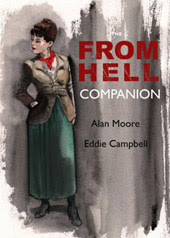
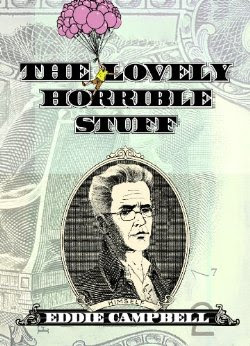

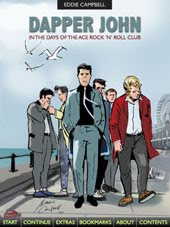
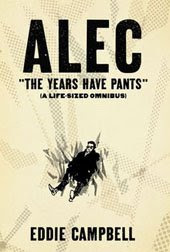
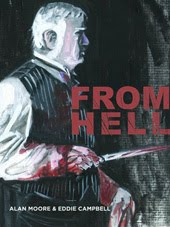
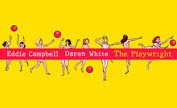
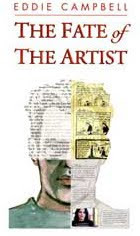

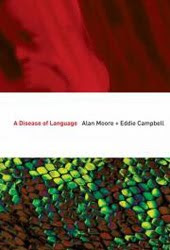
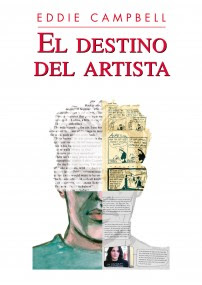
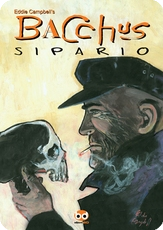
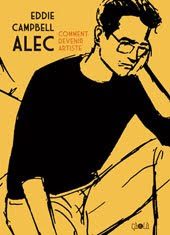

11 Comments:
The amazing romance of Xaime's The Love Bunglers is perhaps just slightly less dumb than at least some of these.
Love is in the air. All these blokes willing to admit they have feelings. I think this is grand!
More of it, I say!
I expect that's Richard Howell you're quoting above, not "Steve Howell."
And I can't wait for that Fantagraphics collection either. I wish someone would reprint lots of stuff from those early romance days -- I've got a couple of pages of Bill Draut original art from an S&K series called IN LOVE that are just gorgeous...
Thought I just posted this here, but I think it vanished.
I was going to ask if you've read Joe Simon's excellent autobiography that recently came out.
And I agree with Kurt and can't wait for that collection. When I think of the availability of classic work now compared to even ten years ago, it seems like I grew up in the dark ages.
Thanks, Fellows. Mistake well caught, Kurt. Now fixed.
I haven't read Simon's book. But one thing I've found in this period is the problem of pointing at an actual piece of work and saying 'That's Simon's." Running a busy studio would have been a full time job, just directing the traffic, assigning stuff, getting it back, correcting it etc.
I should read his book!!
Andrew... Your comment first attached itself to another post. i caught that and the one about travel comics. thanks.
Eddie
Eddie, There are plenty of people who claim Kirby work in the 70's and later is his best work. That's absolutely my opinion. In fact I'd trade the whole of the Marvel work for one more issue of the New Gods.
That's only because a comic book is ideally something I'd like to read, and Kirby writing during the Marvell era never made it into the printed comics, as artwork they are tremendous.
Patrick Ford
An entire article about Kirby romance art without once mentioning Vinnie or showing any of their collaborations?
I can ony guess but were you on holiday and the article was ghost written by Mark Evanier?
Colletta gets a whole post all to himself :)
coming soon
Eddie
This post is all about the S&K romance comics of the 1940s and 1950s, anyway, and Colletta didn't work on them. Kirby and Simon hired their collaborators back then, and I don't think Colletta worked with Kirby until Stan paired them up very late in the 1950s.
Those S&K comics have much more life and character to them, too. Colletta "prettied up" Kirby, but also toned him down, and without the wild superhero fantasy visuals to combat that effect, the result (to my mind, at least) is a kind of sweet inoffensive blandness (which, to be fair, also describes the stories).
S&K, all the way!
kdb
Post a Comment
Subscribe to Post Comments [Atom]
<< Home